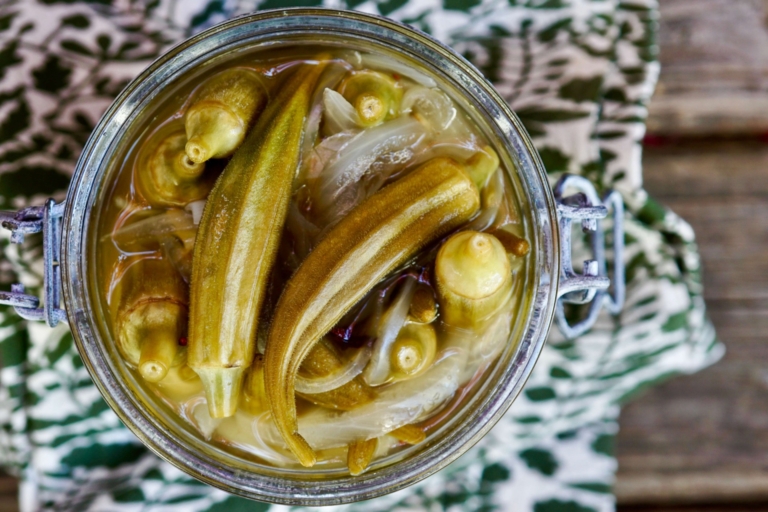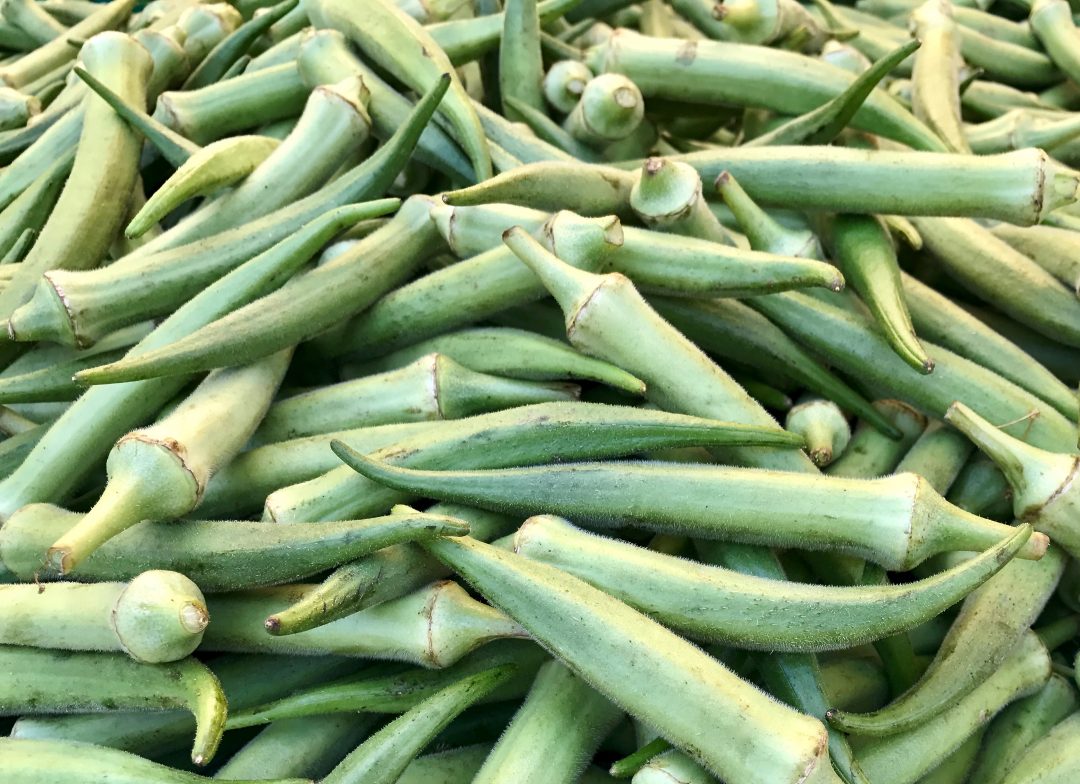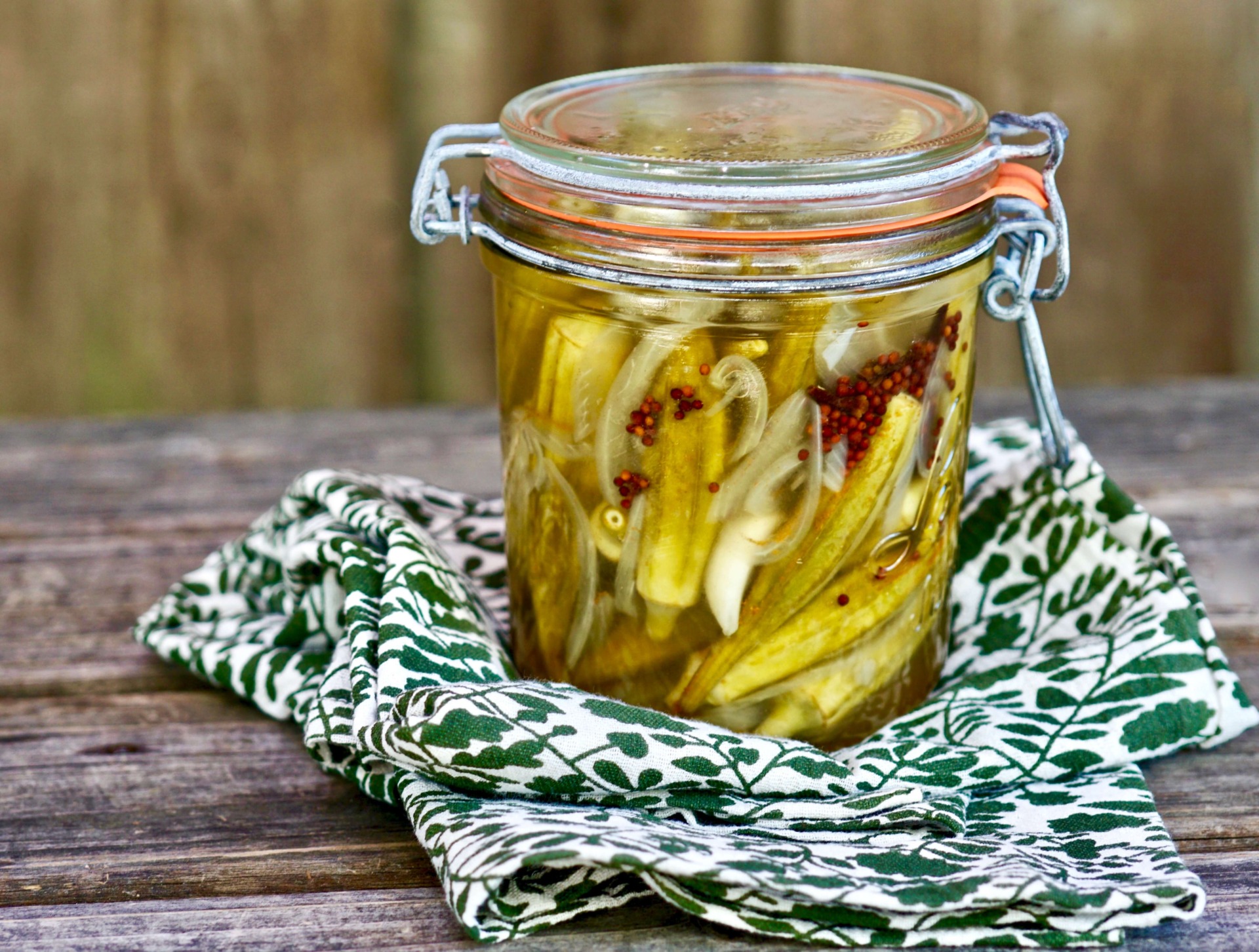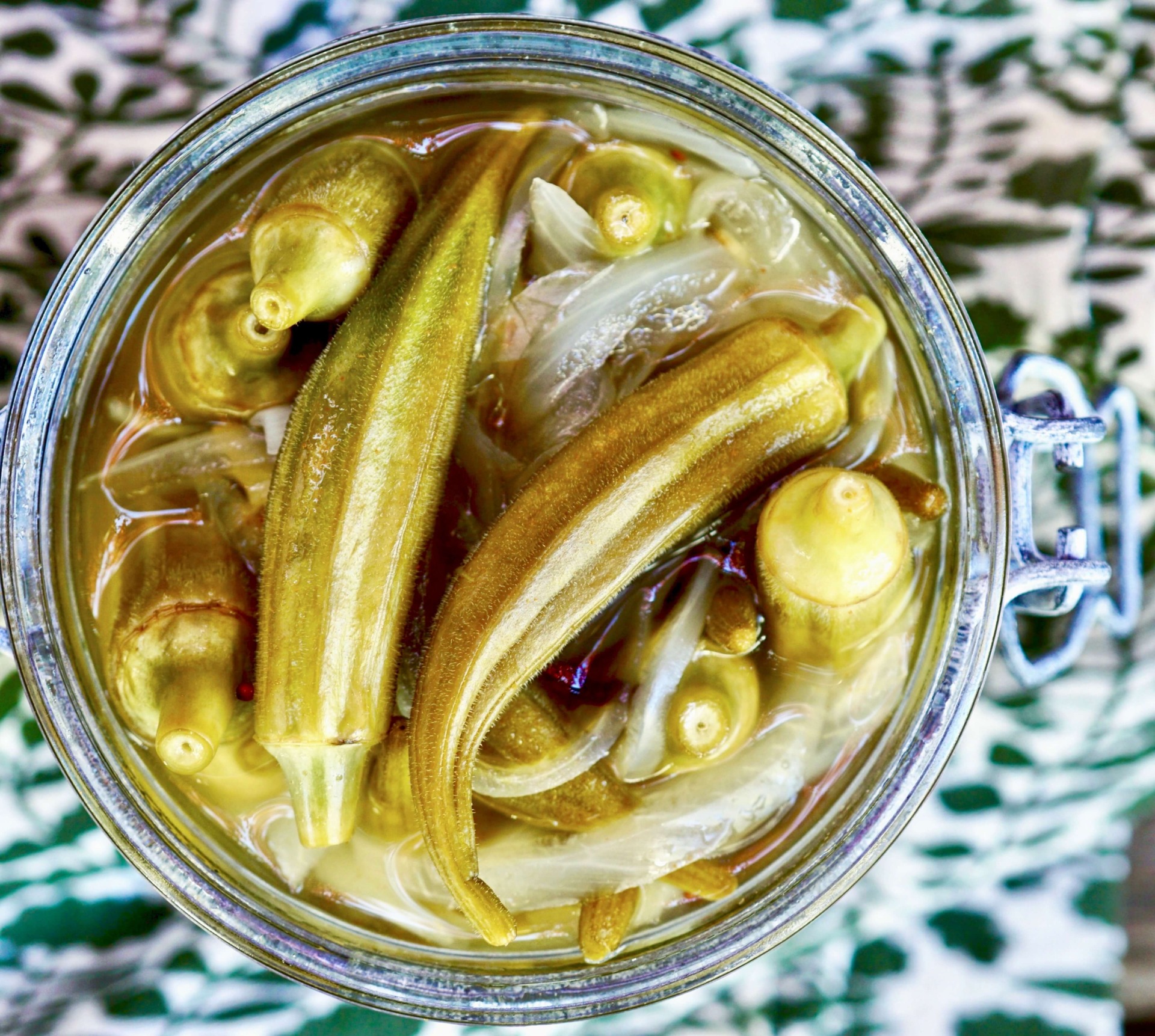Quick Pickled Okra

Let’s chat a bit about okra. Some people are scared of it, but I love it. Okra, also known as “ladies fingers” or “ochro”, is a flowering plant in the mallow family (the same family that includes hibiscus and cotton) that’s cultivated for its edible green seed pods. For any “nose-to-tail” eaters trying to reduce food waste, okra should definitely be on your list, if it’s not already, as its leaves, flowers, and seeds are all edible either raw or cooked. Young tender okra greens can be cooked just like spinach or beet greens.
Although the origin of okra is somewhat disputed, most believe it has West African, Ethiopian, and South Asian origins. Native to the tropics of the Eastern Hemisphere, okra is now widely grown in many tropical and subtropical regions around the world. Readily available in most grocery stores, okra’s season typically runs from July to September. Fried, stewed, pickled, or in gumbo, I’m an okra fan.
What people don’t know about okra is that health-wise, it packs a powerful punch. High in folate, okra also has an extremely powerful concentration of antioxidants–something we all need. Okra is also a potent source of vitamin C as well as being high in fiber. But still, okra often often gets a bad rap.
The biggest complaint I hear about okra is it’s “slimy“. So, let’s take a moment to address that particular issue upfront. To clarify, the “slime” (or mucilage as it’s called) is actually a type of digestible fiber that helps the plant with water storage, and here’s the kicker–it’s actually good for you! Okra’s high fiber and mucilage content are ideal for helping humans with digestion. But if that’s not enough to get you to try okra I get it, below are a few cooking tips to help you reduce the okra slime factor.
Okra Cooking Tips:
- Choose small pods.
- Wash and dry okra thoroughly.
- If cooking, cook quickly and at high heat to reduce mucilage.
- Do not overcook. This produces more slime.
Although I have always loved okra, pickled okra is a more recent discovery and both my older son and I are obsessed. I’ve blogged about my husband’s love of all things picked before, so I think I have him to blame. The secret to great pickled okra is all about texture and flavor balance. The good news is, that pickling fresh okra does not make them slimy, it actually makes the okra crunchy. If you take a look inside of a fresh okra pod it’s mostly hollow, with tender seeds, and lots of air. This is what helps keep them crunchy when pickled properly.
This recipe is a “quick” pickling recipe, meaning, the process is fast and is not a traditional canning method. If you’ve read my blog before, you already know I’m a big fan of “quick-method” anything, from jams to breads. In quick method pickling there is no sterilization of jars or fear of botulism. For this fast method of pickling okra or other vegetables, to be safe, consumption should happen within two weeks.
Quick Pickled Okra
Ingredients:
- 1 pound fresh okra pods, washed
- 6 tablespoons kosher salt, divided
- 2 cups white vinegar
- 1 cup water
- 2 tablespoons sugar
- 4 garlic cloves, peeled and kept whole
- 2 Bay leaves
- 1/2 teaspoon cayenne pepper
- 1 teaspoon brown mustard seeds
- 5 cloves
- 1/2 cup sliced yellow onion
Directions:
- Place the cleaned okra in a colander. Toast with 2 1/2 tablespoons salt and using your hands, mix well to coat. Place the colander in a large mixing bowl and allow it to sit for 45 minutes.
- In a medium size saucepan add the vinegar, water, remaining 2 1/2 tablespoons salt, sugar, garlic, Bay leaves, cayenne, mustard seeds, and cloves, and bring to a boil. Once boiling, add the onion and cook for an additional minute. Remove from the heat and set aside.
- Rinse the okra and cold water to remove the salt. Place the cleaned okra in a large mixing bowl. Pour the brine mixture over the okra and mix well to coat. Allow the okra to cool to room temperature, turning occasionally, for about 30 minutes.
- Once the okra has cooled, place it in a large glass jar and refrigerate for at least 5 hours. Serve chilled.





